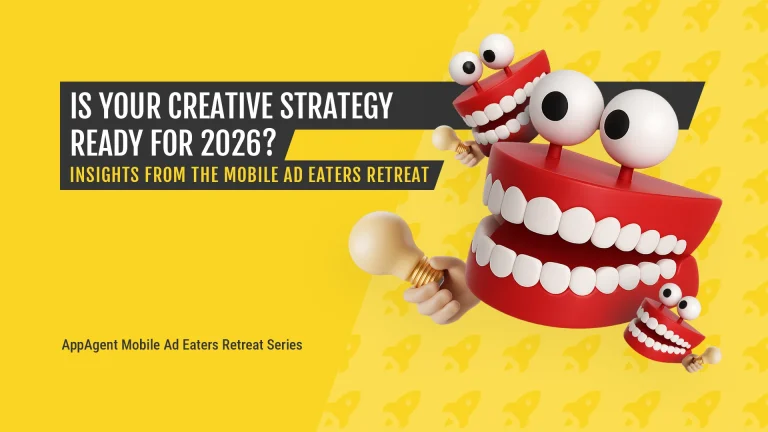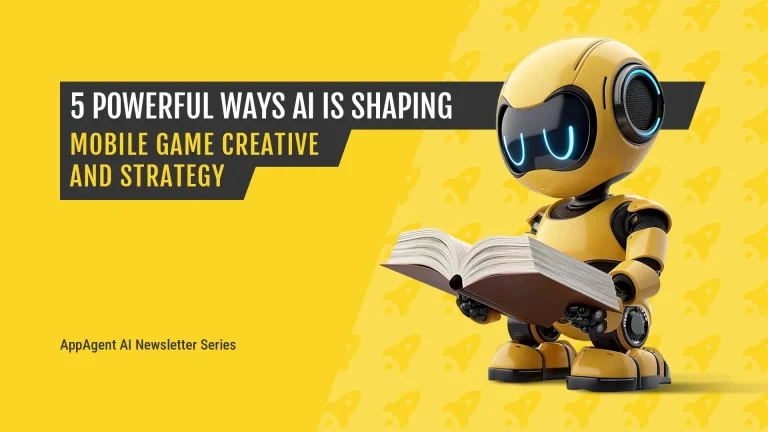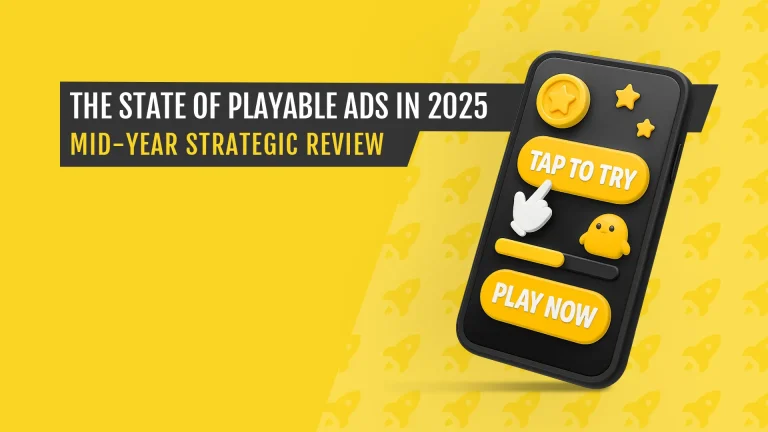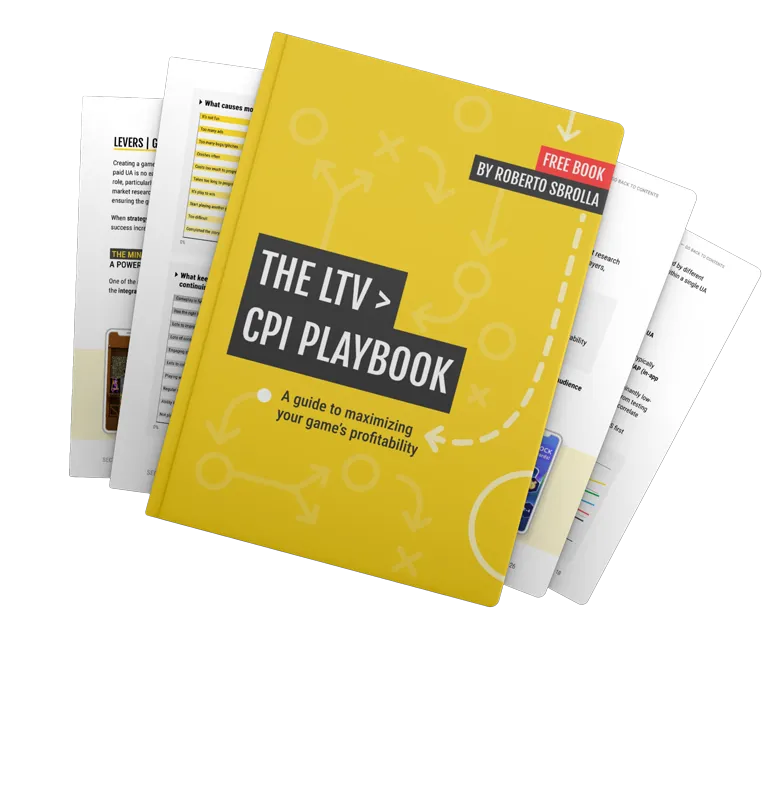Subscribe to Mobile Artificial Insights – a weekly LinkedIn newsletter where we explore the practical applications of AI tools in every aspect of mobile marketing.
As the world becomes more AI-driven, many people are wondering whether their jobs will be taken over by machines. I recently posed this question to my LinkedIn connections and was surprised to find that most people predicted it would happen within the next 20 years. However, I believe that AI won’t necessarily replace our jobs, but supplement them, allowing us to work more efficiently and effectively.
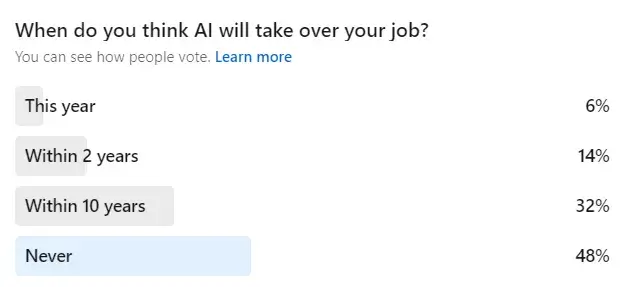
As someone who spends a lot of time on LinkedIn, I can attest to the overwhelming amount of AI-related topics flooding my newsfeed. It’s easy to feel lost in the noise, wondering which developments are actually relevant and how to practically apply them.
That’s why we want to help you understand how to use AI right now. We also want to show you how to prepare for the future with AI strategies. At AppAgent, we’re committed to staying ahead of the curve in marketing innovations. We incorporate AI into our marketing strategies to maximize efficiency and results. I want to share the insights we’ve collected so far with you for your benefit.
The creative industry is one area where AI tools have immense potential to transform workflows. Their applications are only limited by our imagination and willingness to innovate creatively. In the following sections, we’ll explore various creative use cases of AI programs. We will provide you with insights on how to leverage them for your projects successfully.
Let’s dive in and explore the exciting world of AI in mobile ad creatives!
Tools we’ve tested
Before we get into practical creative use cases, let’s start with an overview of the tools we’ve tested at AppAgent. Below you can see that we’ve categorized the tools into three categories: usable for work, usable with limitations, and unusable at the moment.

Under the usable category, we have tested ChatGPT, Jasper, Revoicer, Midjourney, and other similar tools. These tools are fully functional and have a wide range of applications in different industries. There are also some tools, however, that we found to have limitations, such as D-ID and Otter.ai, which we will discuss later on.
And of course, we’ve come across some tools that were simply not suitable for the purposes we’re covering today–including artbreeder and DALL-E 2.
Now, let’s focus on how you can actually use these AI tools in your creative processes. AI can also be utilized in mobile marketing in general for various applications. AI can be used in the creation of both concepts and assets to save time. It can help you improve the overall quality of your work effectively and efficiently. For example, AI can help you generate new ideas and refine your existing concepts easily. It can even create visual or audio content for your projects, streamlining the creative process.
AI in Creative production: A practical case study
In this section, we will explore a practical example of how AI tools can be used throughout the creative process. To demonstrate this, we’ll be using Bang–a Wild West-themed card game with characters including a Sheriff, a Renegade, and an Outlaw. Depending on their role, each player is given a quest that they must fulfill to win.
This existing game will provide us with the general inspiration to create a “brand new” mobile game.
Characters
Our first goal is to create a new character concept. As with any creative project, we need to come up with something unique and interesting, but we also want to speed up the process and reduce the time spent on brainstorming and ideation. To achieve this goal, we can turn to tools such as ChatGPT and Midjourney.
We begin by asking ChatGPT to create a new character concept for us by providing it with keywords related to Bang’s Wild West theme. Within seconds, it generates a complete description of our character and her abilities. This provides us with a starting point to work with.
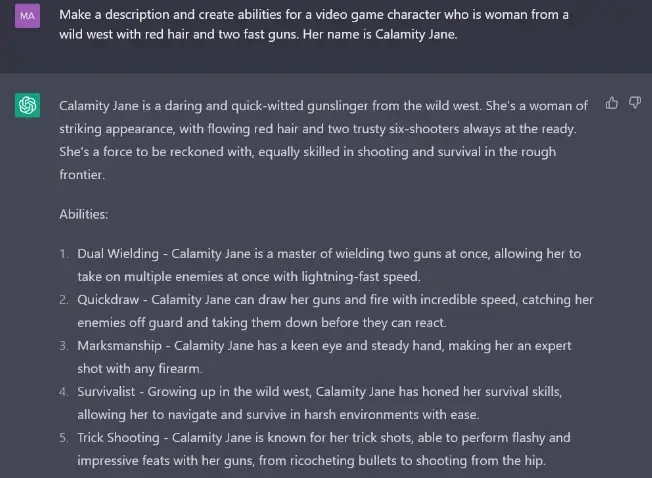
We still, however, need a visual representation of the character to complete our concept. So now we turn to Midjourney, an AI-powered design tool. We decided to select a hyper-realistic style for this particular use case, and use the generated keywords from ChatGPT (“woman, wild west, full-body, gun, red hair”) to inform the character’s design.
We now have a visual manifestation of Calamity Jane.

This process highlights how we’re able to create a unique and interesting character concept for our project.
It takes a fraction of the time it would have taken us to do it manually. These AI tools allow us to generate new ideas and explore different design options quickly and efficiently. They free up our time and energy to focus on other aspects of the creative process in mobile marketing.
Can we make her “alive”?
Let’s take it a step further–let’s make Calamity Jane come to life and introduce herself. To do this, we can generate a script for her using ChatGPT and combine this text with our Midjourney visuals using D-ID. Here’s the output:
One interesting aspect of this process is that soon we will likely have the ability to see these characters in 3D. As technology continues to advance, we can expect to see more and more impressive visuals in games. In fact, tools like AccuRIG and Mixamo can be used for rigging, which allows you to create a skeleton for your character to animate body movements. Rigging is a time-consuming and tedious process that used to require expensive technology and a large team of experts. With the help of AI, it can now be done from your laptop in the comfort of your own home.
Once the character is rigged, the Plask.ai tool comes in place. It can be used to transfer body movements from your smartphone camera to a 3D model. This means that even if you don’t have access to expensive motion capture technology, you can still create realistic movements for your characters.
All of these advancements in technology are allowing smaller studios and indie developers to create high-quality mobile games without breaking the bank on external collaborations. As the technology continues to advance, we can expect to see even more impressive results in the future.
GAME ITEMS
In addition to creating characters, AI can also be used to generate items used in the game, which is incredibly useful for speeding up the production process.
Today’s AI tools are smart enough to create items that have effects and abilities that are typically seen in mobile games. This allows for a lot of creative freedom, as players can use one or multiple items and combine them in different ways.
Let’s go through the same process that we used to create our character. We begin by prompting ChatGPT to create a description and effect for an item, in this case, “a beer in a wild west video game.”
Here’s what the AI came up with:
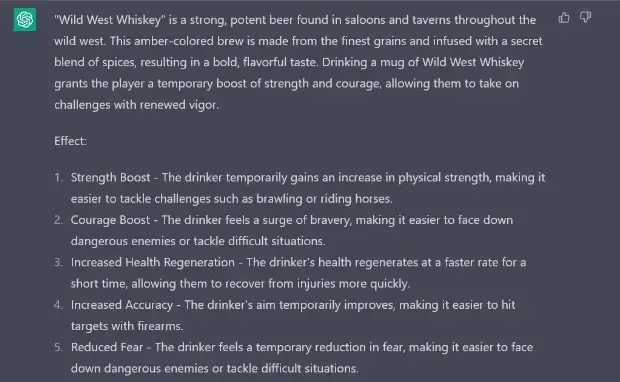
Now we move to Midjourney to create the visual representation of our item using a few key phrases (“3D model of a beer, wild west, hyper-realistic”).
And voilà, Wild West Whiskey is born.
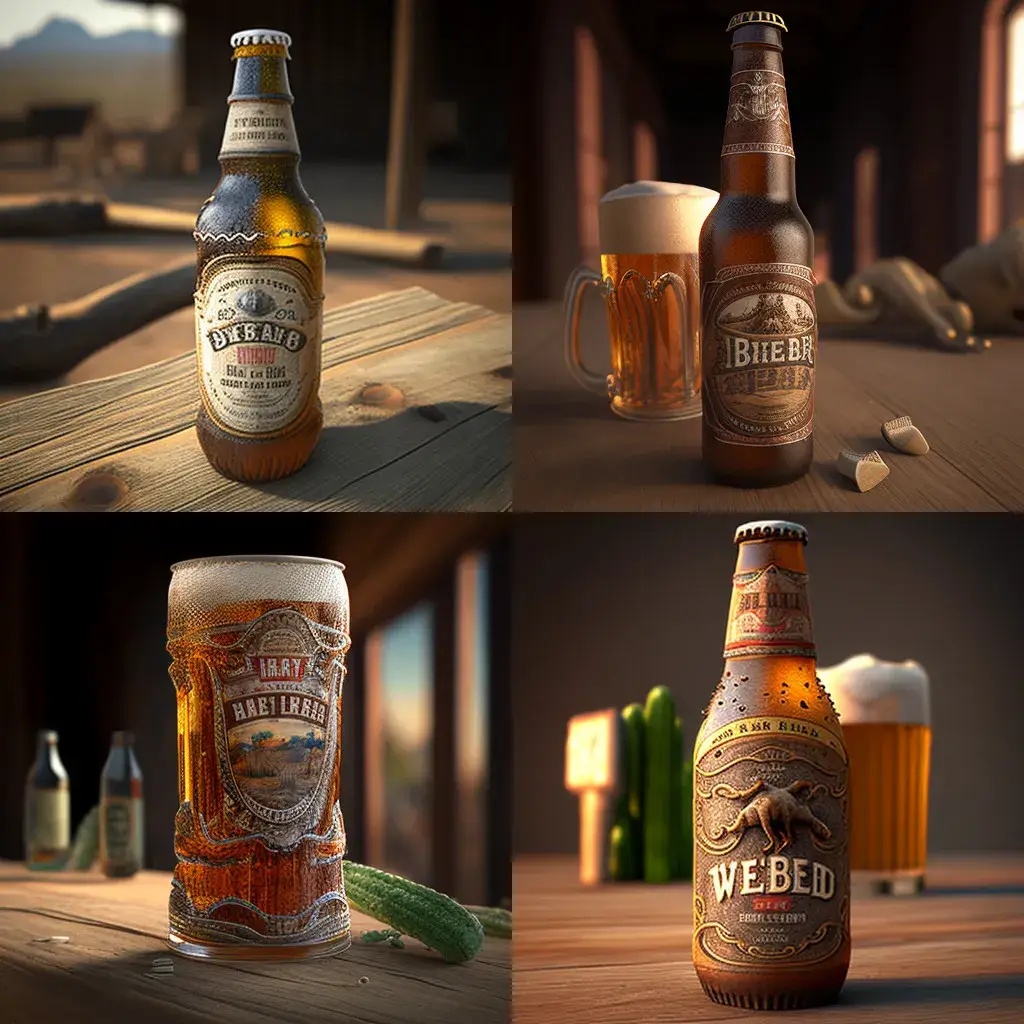
FEATURE GRAPHICS
Just as with characters and items, we can harness the power of AI to produce visually-striking feature graphics for our game. In this example, we prompted Midjourney with keywords like “wild west scene” and “gunfight” to generate a variety of different feature graphics and backgrounds for us to choose from.
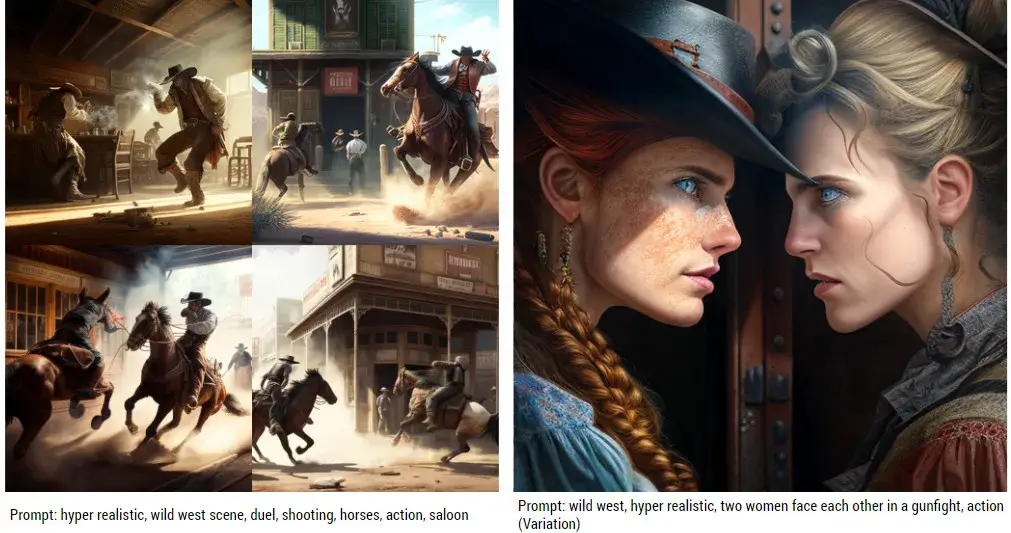
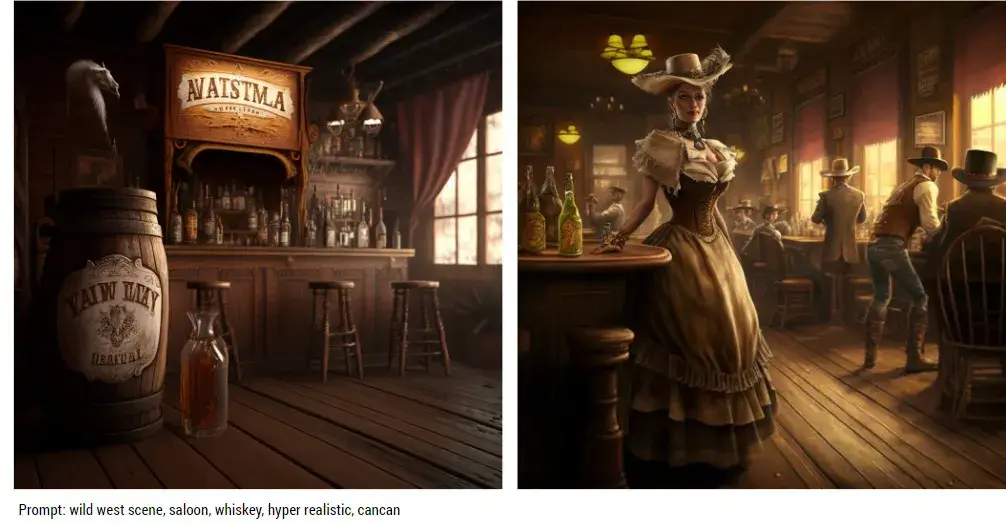
ICONS
Icons are a crucial component of any design concept. But creating them from scratch can be a time-consuming task. With AI generation tools like Midjourney, you can create an icon for your mobile game in just a few minutes, a task that would have taken hours to do manually.
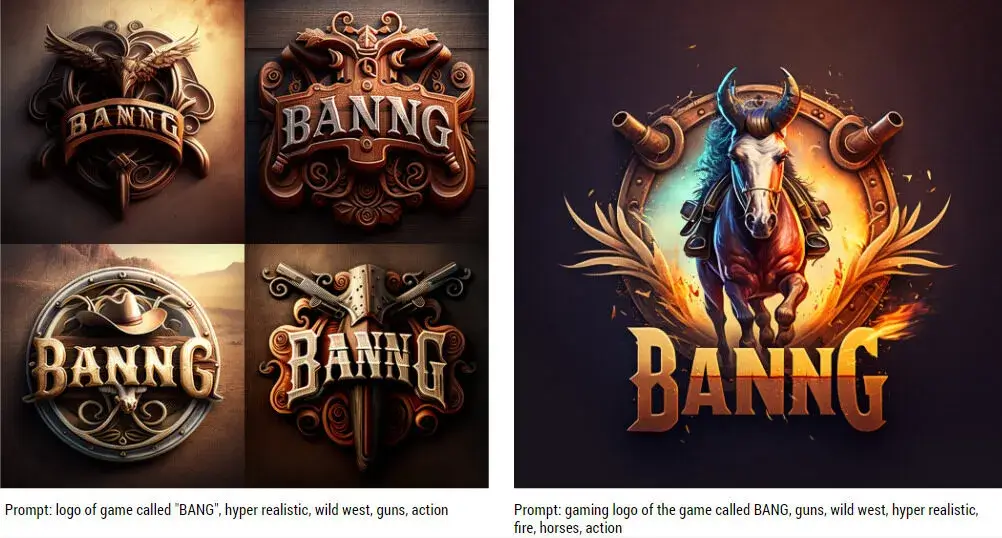
Of course, no tool is perfect, as they rely on algorithms to generate designs based on certain parameters. This means that the AI may not always interpret text or design elements in the way a human designer would, and can make mistakes that result in poor design choices. As you can see in the example above, Midjourney consistently generated icons with a misspelling of the game’s title.
That being said, there are workarounds–sometimes you just need to get creative. Below you can see how we prompted the AI to produce an icon with the correct spelling using an extremely basic mockup.
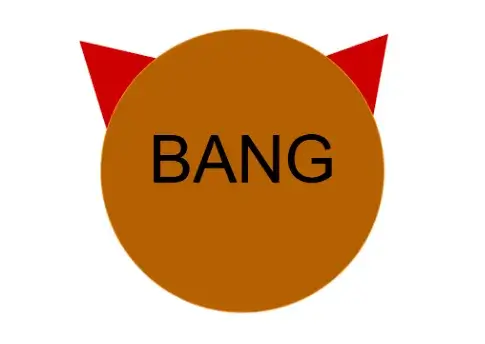
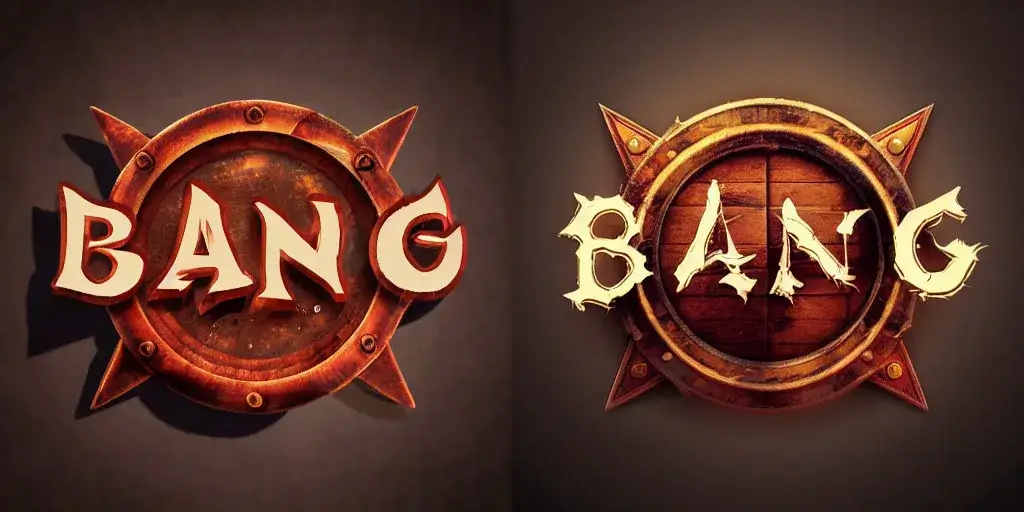
This was simply a test and showcase to prove that you can have text spelled correctly. Just use references In your Midjourney designs. The key takeaway is that there is no single ‘right’ way to create an icon. By using the tools at your disposal and getting creative, you can simplify the process. This will help you create stunning designs in no time.
If you want to see some more creative use cases in action, check out the recording of our recent webinar on How to Optimize your Mobile Marketing Strategy with AI.
The Future of AI in Creative Production
In the world of game development, generating background and character designs can be a time-consuming process. That’s why the announcement of Netflix Japan’s animated movie, “The Dog and the Boy,” and the use of AI to generate the movie’s backgrounds caught my attention. While we are not sure which AI tool was used, the look of the backgrounds is reminiscent of Stable Diffusion. It’s a tool that can streamline the production process effectively and enhance creative workflows significantly.

Generating backgrounds, items, and characters is a huge part of game development. AI can be a powerful tool to make the process faster and more efficient. The fact that AI was used to generate the backgrounds for the Netflix movie is a practical example of how AI can be used in game development. With AI tools like Stable Diffusion, game developers can create stunning backgrounds and characters. All that in a fraction of the time it would take to create them manually.
Of course, AI is not a magic solution that will solve all game development problems in mobile marketing. It has its limitations and cannot replace human creativity and innovation. However, it can be a useful tool to enhance the process. This allow developers to focus on other aspects of the game, such as gameplay mechanics and storytelling. I’m personally very excited to see how AI will evolve and impact the game development industry in the future.
Limitations of AI in Mobile Marketing
As you can see, AI tools have a lot of potential for creative processes. They can accelerate the production process and help bring concepts to life quickly. But we also need to keep in mind their limitations. As we mentioned earlier, some of the tools we tested have constraints. For example, it can’t simulate hair movement in videos or consistently misspelling text in visual designs. The important thing to keep in mind is that these tools can still serve as a starting point for designers and creatives.
Conclusion
AI technology is constantly evolving. What these tools can do today may not be the same as what they can do in a month or a week. It’s exciting to think about the possibilities that lie ahead as these tools become more advanced and capable. We’ll continue to keep an eye on the development of AI in creative industries and share our findings with you.
In the meantime, I encourage you to try out different AI tools for your own creative projects. Experiment with different styles and techniques, and see what works best for you. AI can be a valuable asset in your creative toolkit, and I’m excited to see what you can create with it.



